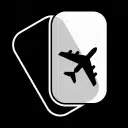Private Jet Charter Q & A Week 2: What types of aviation weather could affect my charter flight?
Imagine yourself in the following scenario: today is the day of your next air charter flight. All your bags are packed, and you’ve already reached your departure airport safely and on-time. Just as you are getting ready to board the plane, your private flight advisor calls to inform you that your charter flight has been delayed due to inclement weather. As frustrating as aviation weather delays are for private jet travelers, sometimes they are unavoidable. When inclement weather occurs, pilots, air traffic controllers and private flight advisors work together to find an alternative solution without compromising the safety of your flight. Sometimes private flight advisors can find a solution quickly, while other times, flights have to be rescheduled to a later date when the weather is less severe. In the past, many of our clients at Stratos Jet Charters have asked us what types of aviation weather could possibly affect their charter flights. While there are several types of aviation weather that could negatively impact your charter flight, we’ve compiled a list of the most common types of aviation weather that could delay air charter flights.
How a Thunderstorm Affects Charter Jet Flights
If you’re a frequent private jet traveler, you’ve probably experienced a time when your charter flight was delayed or even cancelled by a thunderstorm. Storms occur frequently in the earth’s atmosphere, and are often the cause of aviation weather delays. Once developed, thunderstorms can play host to a variety of hazardous weather conditions, from strong wind gusts to catastrophic tornadoes. Air charter pilots use great caution to avoid thunderstorms, but sometimes lines of active thunderstorms, called squall lines, prevent pilots from reaching their destination. When this happens, you charter flight is likely to be delayed until your pilot, air traffic controller or jet charter agent can find an alternative solution. In the event a severe storm occurs during your flight, air traffic controllers can provide an alternative solution by granting pilots clearance into alternate airports. They can also vector private aircraft around storms, allowing the intensity of the storm to die down in order for the aircraft to land safely at the intended destination.
How Fog can Affect Air Charter Flights
The low-lying clouds and reduced visibility conditions caused by fog frequently cause jet charter flight delays and cancellations. Although not typically associated with inclement weather, heavy fog can create possible weather concerns for jet charter flights by limiting runway visibility, creating less than desirable conditions needed for safe operation by private aircraft. Fog often occurs in the morning hours along the coast of California and in the Northeast near Martha’s Vineyard and Nantucket. When fog limits visibility conditions at your destination airport, air charter pilots will typically divert to an alternate airport with more favorable conditions. From there, Stratos Jets agents can assist with providing ground transportation to your destination.
How a Tropical Storm Could Impact Private Jet Charters
Hurricanes, cyclones and tropical depressions all have the ability to delay or cancel private jet charter flights with their extremely strong wind gusts, torrential downpours and generally unpredictable nature. For the Atlantic Ocean hurricane season, these massive storm systems generally develop from the month of June to early November. When a tropical storm or hurricane occurs, most airports temporarily shut down operations until the storm has passed. In order to avoid the dangers and hazards of tropical weather, air charter flights typically depart before the storm has a chance to make landfall. In the event of a tropical storm, Stratos Jets agents can assist travelers with modifying their travel plans to help keep them safe.
How Snow and Ice Affect Private Jets
Snow and ice pose two potential threats to private jet charter flights. When snow and slush are not plowed off of runways, they can increase minimum takeoff and landing distances for private jets. This increases the amount of time it takes for private jet charters to safely takeoff and land on snow-packed runways, which causes air traffic delays. When ice forms on a private aircraft, it actually changes the shape of the wing and alters the flow of air over the aircraft, which increases weight and reduces lift capabilities. To avoid these potential dangers, pilots de-ice their private aircraft prior to departure, which can take extra time on the ground. To avoid any snow and ice weather delays, private jet charter flights utilize larger, metropolitan airports during the winter months. Larger airports typically have the necessary equipment to plow snow quickly off runways and can provide hangar facilities to prevent ice from forming on private aircraft overnight.
How Turbulence Can Impact a Jet Charter Flight
While not considered a significant aviation weather phenomena (unless accompanied by wind shear), turbulence can certainly affect your level of comfort during charter flights. Turbulence occurs when bodies of air, moving at widely different speeds, collide into each other. If your charter aircraft encounters heavy turbulence during your flight, your charter pilot may alter your flight route, or climb to a higher altitude where the turbulence is less severe or non-existent. These diversions to avoid turbulence could lead to an increased flight time and and delays reaching your destination airport. Air charter pilots avoid these delays by analyzing weather patterns in advance of your flight to determine the smoothest flight course for your charter flight.
Stratos Jet Charters Aviation Weather Program:
The Stratos Jet Charters Business Aviation Weather Program is a free online service that provides air charter consumers with national weather information regarding air charter flights. This program offers free, daily weather report information to air charter buyers and personalized weather briefings to Stratos Jets clients. The mission of our program is to increase air charter safety by informing air charter consumers of any and all inclement weather conditions in advance of their charter flight. Our daily weather reports include important information about severe aviation weather such as thunderstorms, fog, snow, ice and turbulence that could delay or affect jet charter flights.
Are you ready to book your Los Angeles to San Francisco charter flight yet?
Our friendly, expert air charter agents are here to answer questions or start your quote today. Don`t wait, call now and we'll get you on your way to your destination!
Call 888-593-9066










